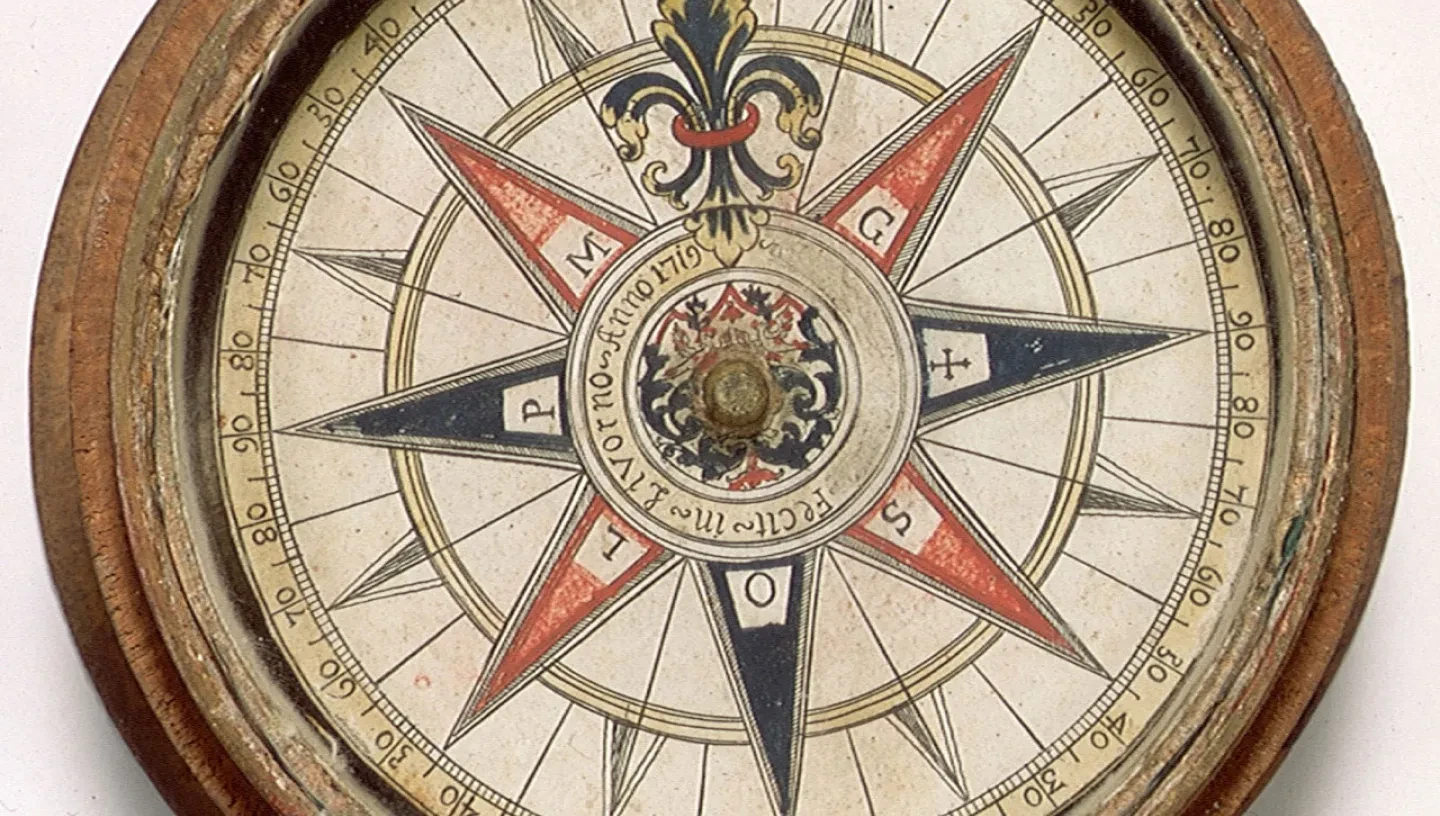
Traditional ways to determine a ship’s position
How did ships know where they were before seamen could get an accurate reading of their east/west location?It is important to remember that mariners were travelling the oceans for centuries before longitude made it possible to say for certain how far east or west the sailors were.
Many voyages were over relatively short distances and along familiar routes, often reasonably close to land, where being able to plot one’s position with precision would have counted for little, but longer voyages often passed without incident too.
The essentials of navigation
A mariner needed to know:
- which way their ship was heading and how fast
- where it had come from
- where they were intending to go
- how the sea and weather might affect them
- whether any hazards lay ahead
Throughout the voyage, the officers supervised regular observations of speed and heading, noting them down and later transferring the information to a written log, alongside wind direction and other remarks.
Dead reckoning
This information could be used to fix the current position by plotting the direction and distance travelled from one point to the next, a procedure known as ‘dead reckoning’. To do this, the mariner used a set of printed tables that allowed him to convert the ship’s various diagonal courses into changes of position north-south (difference of latitude) and east-west (generally called ‘departure’). Latitude (how far north or south you are) could also be measured directly from the maximum height of the Sun or pole star above the horizon. Further information on location could be obtained by using a lead and line to determine the depth of the water. As European navigators embarked on increasingly ambitious voyages, they began to look to methods for fixing their position without the static clues found near land and in shallower seas. Being able to fix both latitude and longitude with some degree of accuracy became more important.
Running down the latitude
One consequence of being unable to measure longitude directly was that seamen chose quite conservative routes. Heading on a direct course carried the real danger that if they missed their destination they might be uncertain which way to sail. Instead, the usual practice was to aim well to the east or west. Once the ship reached the latitude of their destination, they would ‘run down the latitude’ on a westerly or easterly heading, confident that landfall lay ahead.
Near enough?
Mariners had a set of methods that brought together centuries of accumulated seafaring knowledge with instruments and techniques that could be used to fix a ship’s position and course, and navigate it safely from A to B and back again. The staple was dead reckoning, the only routine method of determining longitude until the end of the eighteenth century and the dominant one long after that. It was straightforward, used inexpensive instruments and worked well enough in most situations. Many voyages were over relatively short distances and along familiar routes, often reasonably close to land, where being able to plot one’s position with precision would have counted for little, but longer voyages often passed without incident too.